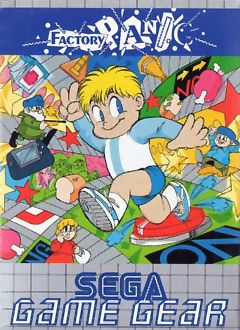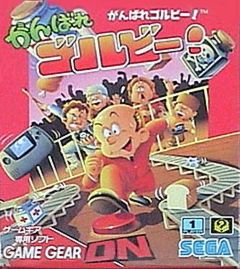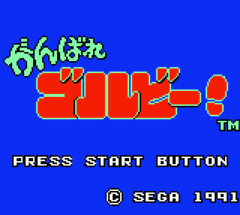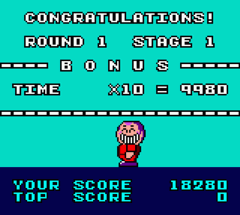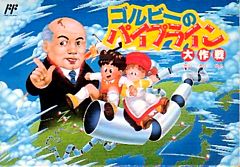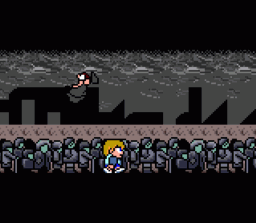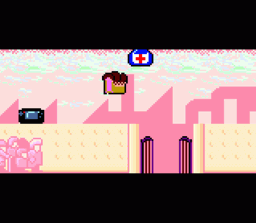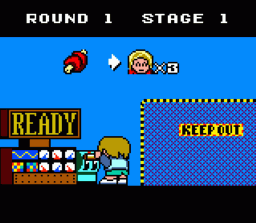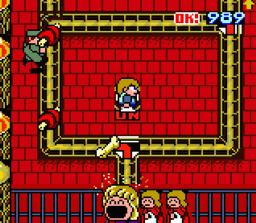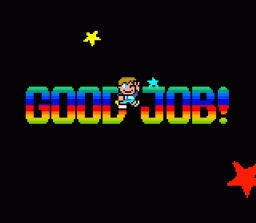Mikhail Sergeyevich Gorbachev...I'm sure many people have heard of his name. Even a young man like myself knows a fair deal about him. Gorbachev was born on March 2, 1931 in Privolnoye, Stavropol Krai, and he is a Russian politician. Being quite possibly the most influential and famous man in his country, Gorbachev accomplished many things and has lived through some of history's most important events. Whether it was the collapse of the USSR, his summit conferences with U.S. President Ronald Reagan, and the eventual end of the Cold War (which Gorbachev helped put an end to), Gorbachev is respected by many and has even received the Nobel Peace Prize for his outstanding work. Though he has had rough spots in his history (who doesn't?), Gorbachev is still famous. You can see him on the Internet, television, and even in a couple of video games.
Of course, the focus of this site is video games and if I spent a whole paragraph just talking about Gorbachev, you can bet that he is SOMEHOW involved with Factory Panic, an old Game Gear game produced by Sega back in the early nineties. Factory Panic was not released in North America and it is a European and Japanese title. Interestingly enough, taking one look at Factory Panic, you probably would never think the game would even have anything to do with Gorbachev, but the Japanese release sure does. Being titled "Ganbare Gorubii!", you play with a man who looks quite a bit like Gorbachev, especially due to the naevus flammeus on the top of Gorubii's head. Actually, "Gorubii" is a nickname that stands for "Gorby" or "Golby", probably since the developers didn't want to spell out Gorbachev due to space limitations.
In Factory Panic, you take control of a daring youth who must go up against the twisted goons of I.M Greede. I.M Greede is buying up all the local factories and hoarding up all the quality goods so that he can build his own empire! To make matters worse, he's giving the good people of Segaville all the rejects and Greede has enough rejects to fill up a landfill. Basically, you must go into numerous factories and give people the good stuff that they rightfully deserve. While the premise of the story seems the same in Ganbare Gorubii, there may be a small amount of difference in the general plot, but not much since neither game has much of a story worth squat. Still, must be nice living in Segaville, a fictitious place where there must be all kinds of things from Sega...living in Segaville land...doing all the things that a Sega man can...OK, I'll stop now.
Factory Panic manages to look quite nice for one of the Sega Game Gear's earliest games and they used a simple idea to provide good visuals; Large and distinguishable. The characters are large and silly and the game is still colorful despite the color palette of the Game Gear. The game definitely makes you think of Russia; The enemies and the stage designs remind me of Russia. The music is also somewhat interesting because the game has a couple of themes that are parts of famous music you may have been familiar with in real life. As an example, you should know that the title screen tune for Factory Panic is a piece from Pyotr Ilyich Tchaikovsky's famous 1812 Overture, though it is only about nine or ten seconds in length. Still, the music is famous and it only takes nine or ten seconds for many to recognize it. The music is decent and fits the theme of the game and while it is a little bit on the repetitive side and there aren't too many tunes, it's fair enough since most stages are very short.
So here's the big question that I'm sure some of you are wondering: "What does a game that seems like a tribute to Mikhail Gorbachev actually play like?"...well, it may please some to know that the game is very playable. In Japan, Ganbare Gorubii is marked as a puzzle game (the ? mark symbol on the box front of Ganbare Gorubii), but it seems like more of a simple action game to me than a puzzle game since the puzzle elements are mostly light and nearly nonexistent. The goal of the game is to please the people of Segaville; All four of them...OK, so maybe Segaville has more than four inhabitants, but the game makes you serve justice to only four: Mrs. Peabody, Little Hughie, Grandpa Tataglia, and Pierre.
The stages are set up with conveyor belts that carry various goods. By stepping on switches, you can change the direction the goods are headed. The idea is to change the course of the goods so that they eventually end up in the hands of the person who needs them. If too many items end up on the conveyor belts, new items won't appear and you must step on switches to send the items out of the factory. You must give meat (or beef or whatever) to Mrs. Peabody, fresh bread to Grandpa Tataglia, medicine to Pierre and...a Sega Game Gear to Little Hughie, who must have a game while everyone else needs something a little more practical! Gotta love in-game advertising! All jokes aside, you should know that it isn't as simple as getting the right item to the right person. There are also rejects and defects; Bones, cogs, moldy bread, and poison! You also have goons who will also hinder your progress. Big Gut Ben will come and eat any meat he comes across right off of the conveyor belt. Steve the Slugger will attack you with his bat if you are close to him. Huge Hank has a gun and isn't afraid to use it. Finally, you have Captain Krazee, who uses an even nastier gun that fires in three directions!
Don't worry though; your hero isn't a complete wimp. He comes equipped with a pair of healthy lungs and can scream at enemies to give them a major headache! Of course, this headache is only temporary, but it is an ideal attack to keep enemies at bay. You can grab a megaphone to increase the range of the hero's scream attack, an electric guitar to temporarily stop all enemies, a red star for an extra life, and a clock to add 100 seconds to your timer. If a citizen (Mrs. Peabody, Pierre, etc.) gets anything but the item they want, it will result in a time reduction penalty, even if they grab your power-up items. If an enemy touches you or you get hit by bullets, you lose a life and the timer resets. Also, during the course of the game, you will also be able to create bridges by picking up special floor panels and setting them down in other areas to create paths for the conveyor belt goods to travel (Instead of stepping on switches to change the path). The stages get trickier and you may even have to push objects on top of a switch so that you can stand on a switch elsewhere. After all, you can't be ubiquitous now can you?
So, what exactly are the cons of Factory Panic? It's a simple, but repetitive game, though it was good for Sega to make the bridge segments to add something different as you progress further through the game. The game is fairly short, with four rounds that consist of eight stages each. If you were into repetitive games like Donkey Kong and Tetris, Factory Panic shouldn't bother you much. It's pretty fun while it lasts and makes for a good time waster. There isn't anything about Factory Panic that was a slap in the face (a two-player mode would have been awesome), with the exception of the ending, which I won't spoil here. I felt that the ending was not only a slap in the face, but also a punch to my gut (Ah...such is life) and while I'm only speaking for myself, I'm sure that many others would think so too. At any rate, Factory Panic is pretty solid and it falls under the "An Oldie, but a goodie" category.
- Written by Vyse the determined - |
